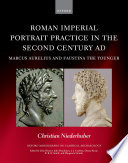

Most ebook files are in PDF format, so you can easily read them using various software such as Foxit Reader or directly on the Google Chrome browser.
Some ebook files are released by publishers in other formats such as .awz, .mobi, .epub, .fb2, etc. You may need to install specific software to read these formats on mobile/PC, such as Calibre.
Please read the tutorial at this link: https://ebookbell.com/faq
We offer FREE conversion to the popular formats you request; however, this may take some time. Therefore, right after payment, please email us, and we will try to provide the service as quickly as possible.
For some exceptional file formats or broken links (if any), please refrain from opening any disputes. Instead, email us first, and we will try to assist within a maximum of 6 hours.
EbookBell Team

5.0
18 reviewsIt has long been thought that imperial portrait types were officially commissioned to commemorate specific historical moments and that they were made available to both the mint and the marble workshops in Rome, assuming a close correspondence between portraits on coins and in the round. All of this, however, has never been clearly proven, nor has it been disproven by a close systematic examination of the evidence on a broad material basis by those scholars who have
questioned it.
Through systematic case studies of Faustina the Younger's and Marcus Aurelius' portraits on coins and in sculpture, this book provides new insights into the functioning of the imperial image in Rome in the second century AD that move a difficult, much-discussed subject forward decisively. The new evidence presented here has made it necessary to adjust the established model; more flexibility is needed to describe the processes and practices behind the phenomenon of 'repeated' imperial portraits
and how the imperial portrait worked in the mint of Rome and in the metropolitan marble workshops.